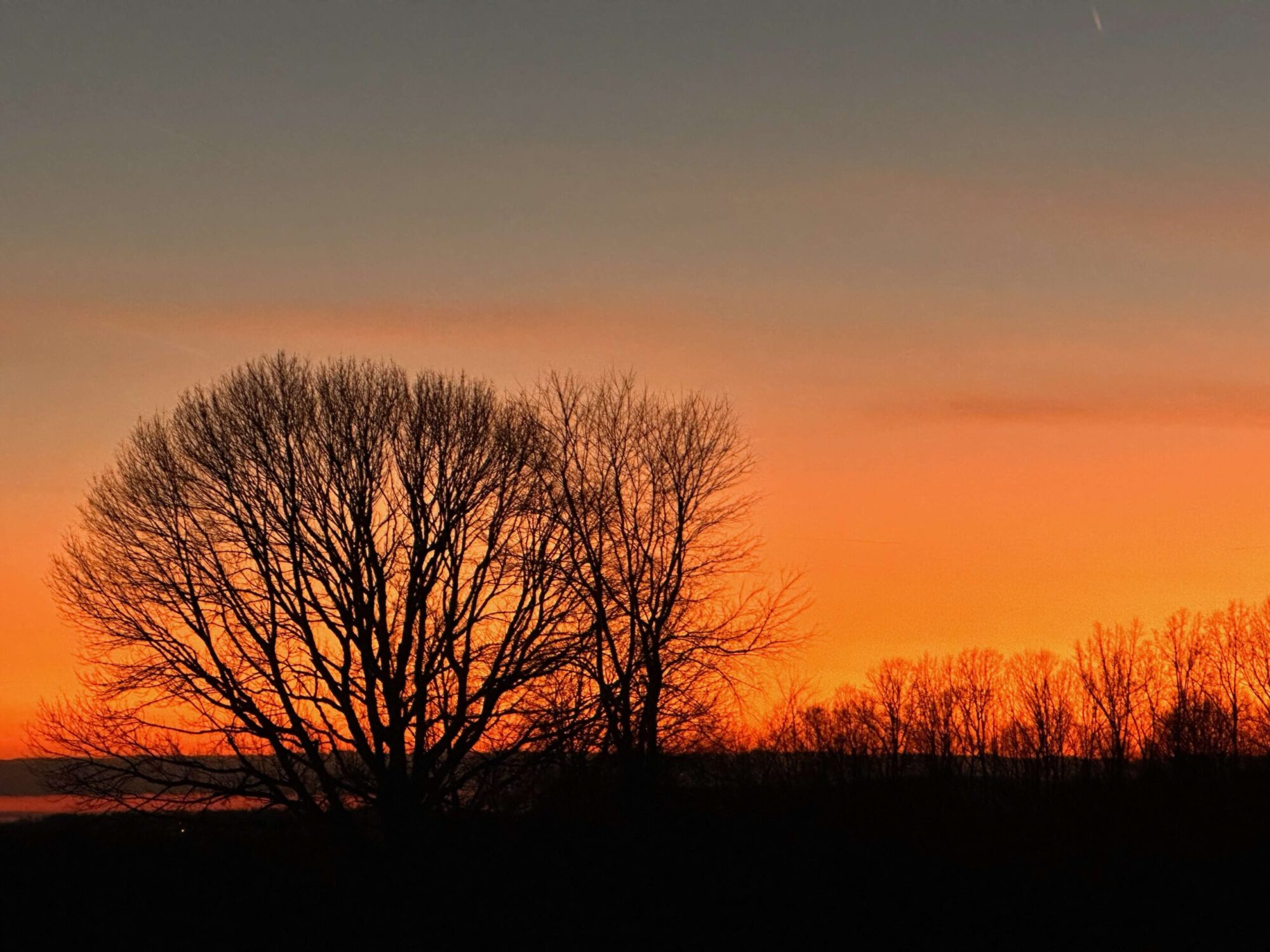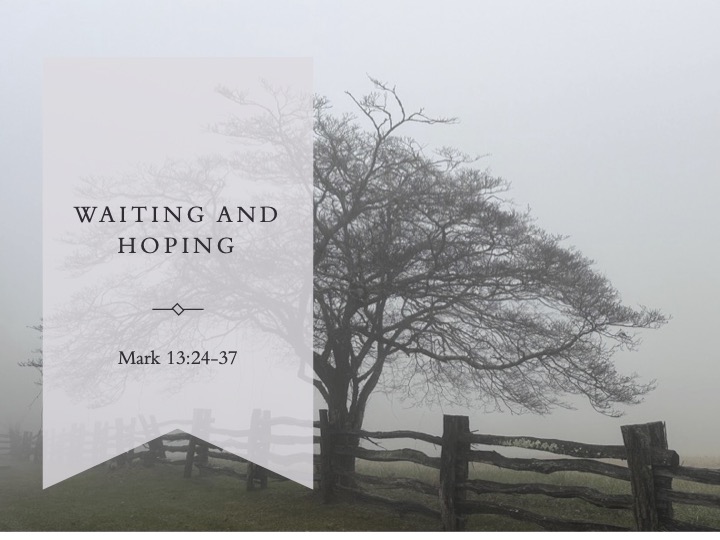Jeff Garrison
Mayberry and Bluemont Churches
Mark 13:24-37
December 3, 2023
After the Advent Candle Lighting
We live in such a wonderful age where solutions to our problems appear regularly. Just this week, I learned Doritos, that’s right, the corn chip company, has unveiled an app for our phones and computers. Miraculously, it silences the sound of Doritos crunching in your mouth.[1]
When you’re on the phone or in meeting over the internet, you can stuff your mouth and crunch away. Imagine taking an online class, you can eat without disturbing anyone. Or if you have a phone call during an NFL game, you can continue snacking as you mumble as if you’re listening and not watching the game. Don’t we live in an incredible age?
Perhaps because I’m old fashion enough to prefer potato chips to Doritos, I found myself asking why we need to eat when in virtual meetings. I mean, who takes corn chips into a staff meeting or a classroom.
Science takes care of many problems but continues to struggle with the ones which really matter. Cancer hasn’t been eradicated, pollution causes premature deaths, plastics fills our oceans, and nuclear war remains a possibility. We need to do what we can to make this world a better place. Biblically, while we are called to work to better the world, we also are reminded that Christ will return.[2] Advent is not just recalling those waiting for Christ’s first visit, it’s about anticipating his return.
Before the Scripture Reading
Today, we explore the end of the 13th Chapter of Mark’s gospel. This chapter takes on an apocalyptic flavor. We’re jumping into the middle of Jesus’ teachings. The stage was set earlier. Admiring the temple, Jesus foretells of its destruction. Then, when a group of disciples corner Jesus, they ask when it will take place.[3]Jesus talks about tribulations. But it’s not all doom, for he ends discussing his return. Of course, he doesn’t provide a clear understanding as to when this will happen, only that we are called to be ready.[4]
Advent is a season of waiting not just for Christmas, but for the hope we have in Christ’s return.
Read Mark 13:24-37.
Keep awake… That used to be so hard when I was a kid. Sermons were the worse. My eyes became heavy and slowly gravity won. But school could be just as hard, especially in a warm classroom before air conditioning.
Keeping awake was difficult, except for on Christmas Eve, when you were told to go to sleep. You expected to awake to something magical. With so much anticipation, sleep was allusive. I’d roll and roll and when my parents looked in, pretend to be asleep. The clocked ticked away.
Keep awake, you don’t know when this is all going to happen and when the Son of Man might appear. It’s been almost 2000 years since Christ left. We’re weary of waiting. It’s not something we’re good at doing. We fret when waiting in the doctor’s office. We stew when stopped for the construction along Highway 58. We brood if a waitress or waiter in a restaurant is inefficient.
Waiting makes us feel out of control, unimportant, unwanted, and helpless. Yet, we must wait all the time. Children wait for Christmas morning. Parents wait on children to go to sleep. And the more we wait, the more our blood pressure rises.
And then, Advent rolls around in the church calendar. A period of waiting. Advent challenges our desire for instant gratification. (Such as provided by the Doritos app). However, I suspect most people don’t mind waiting for Christ’s return. After all, we put off important things in life for another time. But that’s risky, Jesus says. It’s a gamble we shouldn’t take.
Mark provides us with a gloomy picture in this chapter. Much of the chapter refers to the destruction of the temple which occurred in 70 AD. It was a period of false Messiahs and great upheaval. But in verse 24, Jesus moves to discussing his return. Think of it this way. With the temple gone, Jesus, the risen Christ, becomes the focus. Jesus should live in our hearts and be present in the church… But he’s also coming back in person… The good news is that future is in his hands.
In a commentary on this passage, a friend writes:
“If the first advent of Christ has any meaning whatsoever, it is only because he is coming back to judge the living and the dead. If he is not coming back, then there is nothing to celebrate at Christmas…. If ditties along the lines of ‘Have a holly jolly Christmas’ could cure what ails us in this life, then there never would have been any need for God’s Son to go through the bloody trouble of coming here in person.”[5]
Our world has problems. As sinners, we’re a part of that problem and Christ is the solution.
Our passage begins with a description of terrible days. The darkening of the sun and moon while stars fall out of the sky… If you ever witnessed a meteor shower high in the western mountains, long from artificial light, you get a sense of how this can be terrifying. Thinking of them as shooting stars, you wonder if any stars left in the sky. Of course, we know they just look like stars, but we can understand why such showers frightened to those in the ancient world. Mark envisions not just a darkening of the sky, but a collapse of things we take for granted. Chaos reigns.[6]
Perhaps we need to look at this passage in a less literal way. The lights of the sky, as in a theater, are lowered so that your focus remains on the action. In this case, the spotlight shines on Jesus Christ. With the distractions removed, everyone pays attention. The scene is scary and wonderful at the same time. It’s God’s great and final drama in history.
This return involves the gathering of the elect, the faithful, those chosen by God through Christ. The faithful are brought into Christ’s presence.
Jesus then returns to the question that started this discourse, about when these things (such as the destruction of the temple) will occur. He uses a fig tree as a lesson. Just a day or two before, Jesus cursed a barren fig tree. The tree shriveled and died.[7] The prophets used the fig tree as a symbol of Israel.[8]Now, instead of a fig tree withering, he speaks of when it blooms, which is later that most trees. The budding of the fig tree is a sign of when summer is at hand.
Jesus likens the budding figs to when this will all happen. Jesus the Messiah rising into prominence as the temple, which will soon be no more, fades from history. We no longer see God in relationship to the temple. Instead, we encounter God through his Son, our Lord, Jesus Christ. The fig tree which appears dead in winter, puts forth new sprouts and is alive. Christ, who was dead, is resurrected. Christ who ascended to heaven, lives in our hearts. And he will return.
Jesus doesn’t give an exact time for his return. We’re still waiting.
What’s important is that we remain ready. “Keep awake,” this chapter ends, or as The Message translates the ending verse, “Stay at your post. Keep watch.” As one commentator on this passage writes, “vigilance, not calculation, is required.”[9] Don’t try to figure out when Christ returns. Instead, be ready.
The use of the story about the slaves waiting on the master implies that they have assignments which must be fulfilled while the Master is away. Interestingly, with this section in Mark’s gospel, relating to the Master’s return, there are no signs given. The slaves don’t know what to look for, so they must continue with their tasks… Likewise, each member of the church has work to do and by doing that for which we’ve been called, we fulfill our obligation to “watch.”[10]
Christ has come, Christ will come again. But until he does, we are his hands and feet in the world. We should take care of one another while telling his story so that others will catch a glimpse of the hope the world has in Jesus Christ. “Stay at your post.” We do what we’re called to do so we might be ready when Christ comes. Come, Lord Jesus, Come. Amen.
[1] https://www.businessinsider.com/doritos-creates-ai-software-that-silences-chewing-noises-2023-11?op=1
[2] I like this quote from James R. Edwards, The Gospel According to Mark (Grand Rapids: Eerdmans, 2002), 402: “If we dispense with eschatology, then the purpose and destiny of history fall into the hands of humanity alone. No one, I think Christian or not, takes solace in that prospect…” Human life needs to be “redeemed.”
[3] Peter, James, John and Andrew asked Jesus when this will take place, setting the stage for this dialogue that starts in Mark 13:3.
[4] Some scholars suggest that this passage is primarily focused on Jesus’ resurrected glory. See N. T. Wright, Surprised by Scripture: Engaging Contemporary Issues (New York: HarperCollins, 2014), 97.
[5] Scott Hoezee, Elizabeth Steele Halstead, Carrie Steenwyk, “Living in Advent: Worship Ideas from the Gospel of Mark” Reformed Worship 89 (September 2008), 9.
[6] In Genesis 1, with creation, we see God bringing order to chaos. God has such power and will do it again.
[7] Mark 11:12-14, 20-21. Morna D. Hooker, Black’s New Testament Commentaries: The Gospel According to Saint Mark (London: A. C. Black Limited, 1991), 320.
[8] See Jeremiah 8:13, Hosea 9:10, Joel 1:7, Micah 7:1. See footnotes for Mark 11:12-14 in The New Interpreters Study Bible (Abingdon Press, 2003).
[9] William L. Lane, The Gospel of Mark: The New International Commentary on the New Testament (Grand Rapids: Eerdmans, 1974), 482.
[10] Hooker 322. See also Lane, 484.



The best time of the year 😀
Yes it is. Have a wonderful Advent and Christmas season, King.
Well, now I’m curious about the app – almost curious enough to try it. Almost but not quite.
That’s me. I didn’t try it, but several people wanted to know if it worked on other kinds of chips.
We look forward to the coming of Christ.
Come, Lord Jesus, Come!
I agree with you, who eats during a meeting? Do we really need that kind of app?
Some people might, but I don’t!
I’m almost through Fleming Rutledge’s book and it’s giving me a whole different perspective on Advent. Your photo at the end fits the mood. It’s beautiful.
I’m a bit at a loss for words about the Doritos business…
Rutledge’s theology is steeped in eschatology. I admire that.
Have you read Robert Alter’s translation and commentary on the Psalms? I came across a recommendation for it today.
I haven’t, but will now. I didn’t know of him. It doesn’t appear Alter is a rabbi, but a professor in a secular university.